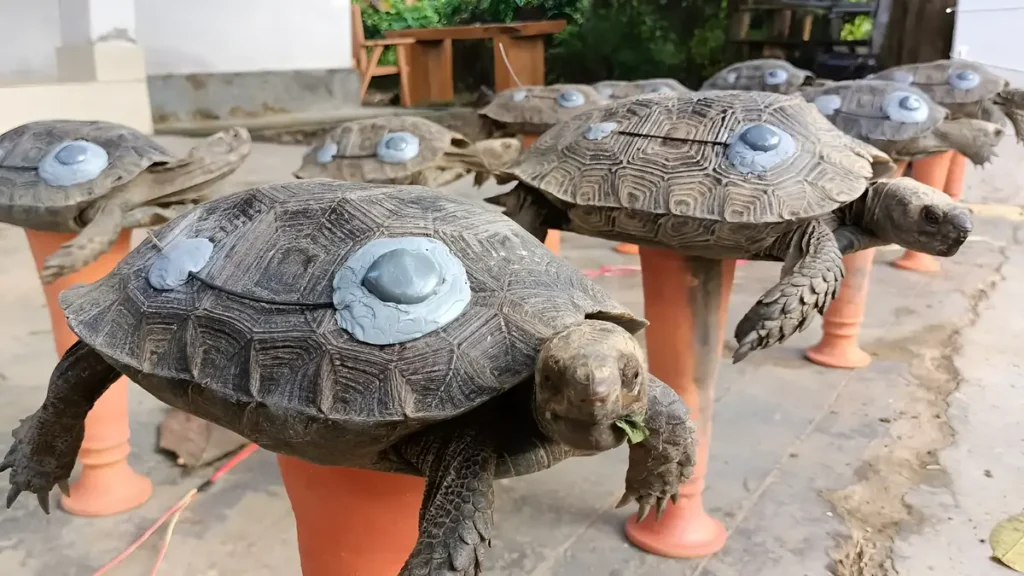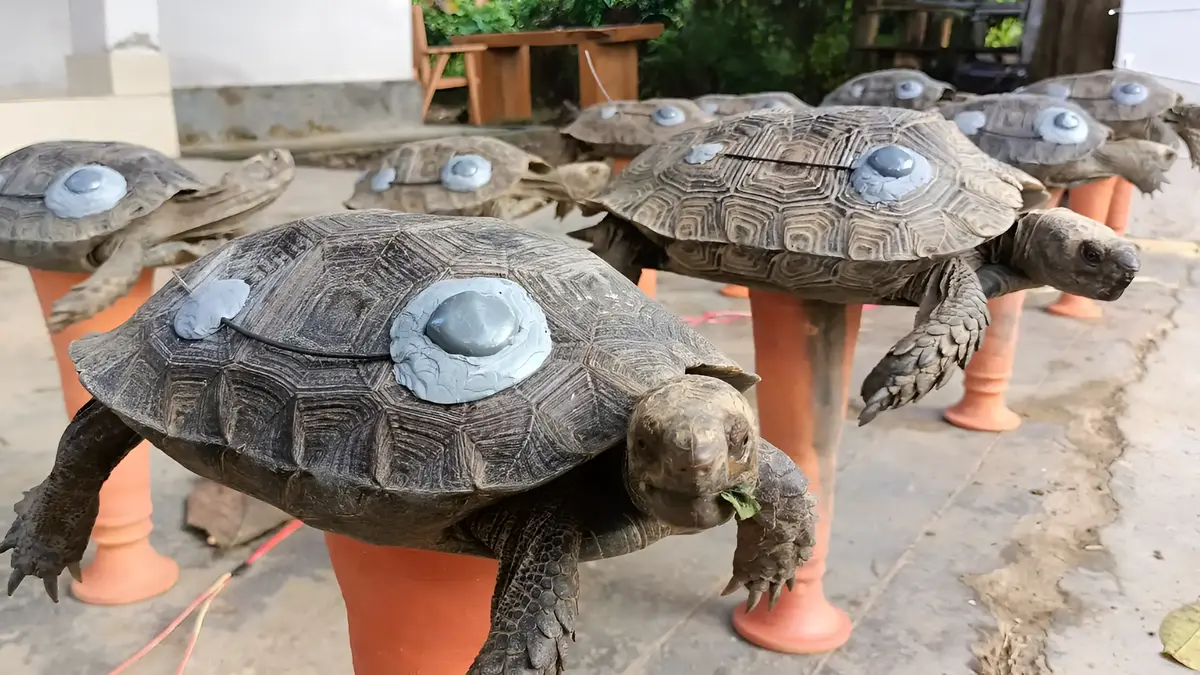India is a land of immense biodiversity, and its rich natural heritage includes a remarkable variety of reptiles. Among these are turtles and tortoises, ancient creatures that have lived on Earth for millions of years. These slow-moving reptiles, often symbolizing longevity and patience, are found across different landscapes of the Indian subcontinent from freshwater rivers and marshes to dry scrublands and coastal areas.
Despite their hardy appearance, many of these species are under threat due to habitat destruction, illegal trade, and pollution. In this post, we explore five of the most fascinating turtle and tortoise species found in India, shedding light on their characteristics, habitats, and current conservation status.

Indian Star Tortoise
The Indian Star Tortoise is perhaps one of the most recognizable and beautiful tortoise species in India. Named for the star-like patterns that decorate its shell, this species is native to dry and arid regions, especially in states like Rajasthan, Gujarat, Tamil Nadu, and parts of Andhra Pradesh. Its high-domed shell and distinct markings serve not just as camouflage but also as a striking visual identifier.
These tortoises are primarily herbivorous, feeding on grasses, fruits, and leaves. Despite their tough shell, they are quite sensitive to environmental changes. The Indian Star Tortoise is often targeted in the illegal pet trade, mainly due to its exotic appearance. This exploitation, combined with habitat loss, has placed the species under significant pressure, and it is now listed under Appendix I of CITES, making international trade illegal. Conservationists have been working to protect its remaining habitats and raise awareness about the dangers of keeping them as pets.
Indian Flapshell Turtle
Found in a wide range of freshwater bodies across the country, the Indian Flapshell Turtle is a common yet fascinating species. Its name comes from the flap-like extensions of skin that can cover its limbs when retracted into the shell, offering additional protection from predators. This turtle is generally olive-brown in color and has a relatively smooth, rounded shell.
The Indian Flapshell Turtle is highly adaptable and can survive in ponds, lakes, rivers, and even rice paddies. It is omnivorous, feeding on aquatic plants, insects, mollusks, and small fish. Due to its resilience and widespread distribution, this species is not currently considered endangered. However, local populations can be affected by water pollution and the loss of wetland habitats. It plays an important role in the ecosystem by helping to control pest populations and keeping aquatic environments clean.
Indian Roofed Turtle
The Indian Roofed Turtle is another freshwater species widely found in the northern and central parts of India, especially in the Ganges and Brahmaputra river systems. Its name derives from the distinctive ridge or “roof” on the top of its shell, which is more prominent in males. The shell itself is usually dark olive or brown, with lighter-colored markings on the edges.
This turtle prefers clean, flowing water bodies and is often seen basking on logs or riverbanks during the day. It primarily feeds on aquatic plants but occasionally consumes insects and carrion. Like many other native turtle species, the Indian Roofed Turtle faces threats from habitat degradation and the pet trade. Additionally, the construction of dams and pollution from agriculture and industry have led to declining populations in several regions. Efforts are underway to monitor river health and promote sustainable water management to protect species like the Indian Roofed Turtle.
Red-Crowned Roofed Turtle
Once widely distributed across northern India, the Red-Crowned Roofed Turtle is now critically endangered and one of the rarest turtle species in the country. This striking species is easily identified by the bright red and yellow markings on the heads of adult males. It belongs to the same genus as the Indian Roofed Turtle but has more specialized habitat requirements, preferring deep, fast-flowing rivers with sandy bottoms.
The Chambal River, one of India’s cleanest rivers, remains one of the last strongholds for this turtle. The Red-Crowned Roofed Turtle is primarily herbivorous and plays an important role in riverine ecosystems. Unfortunately, it has suffered drastically from river pollution, sand mining, and accidental capture in fishing gear. Conservation programs led by government agencies and non-governmental organizations have been established to protect the remaining populations through habitat restoration, legal enforcement, and public education campaigns.
Olive Ridley Sea Turtle
The Olive Ridley Sea Turtle is perhaps the most well-known marine turtle species in India. It is famous for its spectacular mass nesting events known as “arribadas,” where thousands of female turtles come ashore simultaneously to lay their eggs. These events occur mainly along the Odisha coast, particularly at Gahirmatha Beach, which is considered one of the largest nesting grounds for this species.
Unlike the other turtles and tortoises mentioned here, the Olive Ridley is a sea turtle and spends most of its life in the ocean. It is named after the olive-green color of its shell, which is relatively small and heart-shaped compared to other marine turtles. These turtles feed on jellyfish, shrimp, and other marine invertebrates. Despite their wide distribution in tropical and subtropical oceans, Olive Ridleys are vulnerable due to various threats. These include entanglement in fishing nets, beach development, pollution, and climate change, which affects nesting success and hatchling survival.
In recent years, there has been a growing movement in coastal communities and among conservation groups to protect nesting sites and reduce bycatch. Measures like turtle-excluder devices in fishing nets and seasonal fishing bans near nesting beaches have helped improve the outlook for this remarkable species, although much work remains.
Conclusion
Turtles and tortoises have been a part of India’s ecological and cultural landscape for centuries. From freshwater bodies to dry land and coastal waters, these species have adapted to various habitats and continue to play essential roles in maintaining ecological balance. However, the growing pressures of urbanization, pollution, illegal trade, and climate change pose serious threats to their survival. Conservation is not just about protecting individual species but about preserving the intricate web of life they are part of. Public awareness, responsible behavior, and continued conservation efforts are vital if these ancient reptiles are to thrive for generations to come.
India’s turtles and tortoises are more than just slow-moving reptiles. They are resilient survivors, ecological caretakers, and silent witnesses to the changes unfolding in the natural world. Protecting them is not just a responsibility it is a necessity.
Disclaimer: The information provided is for educational purposes only. Always consult local wildlife authorities for accurate details and regulations regarding turtle and tortoise conservation. We do not endorse illegal trade or harm.
